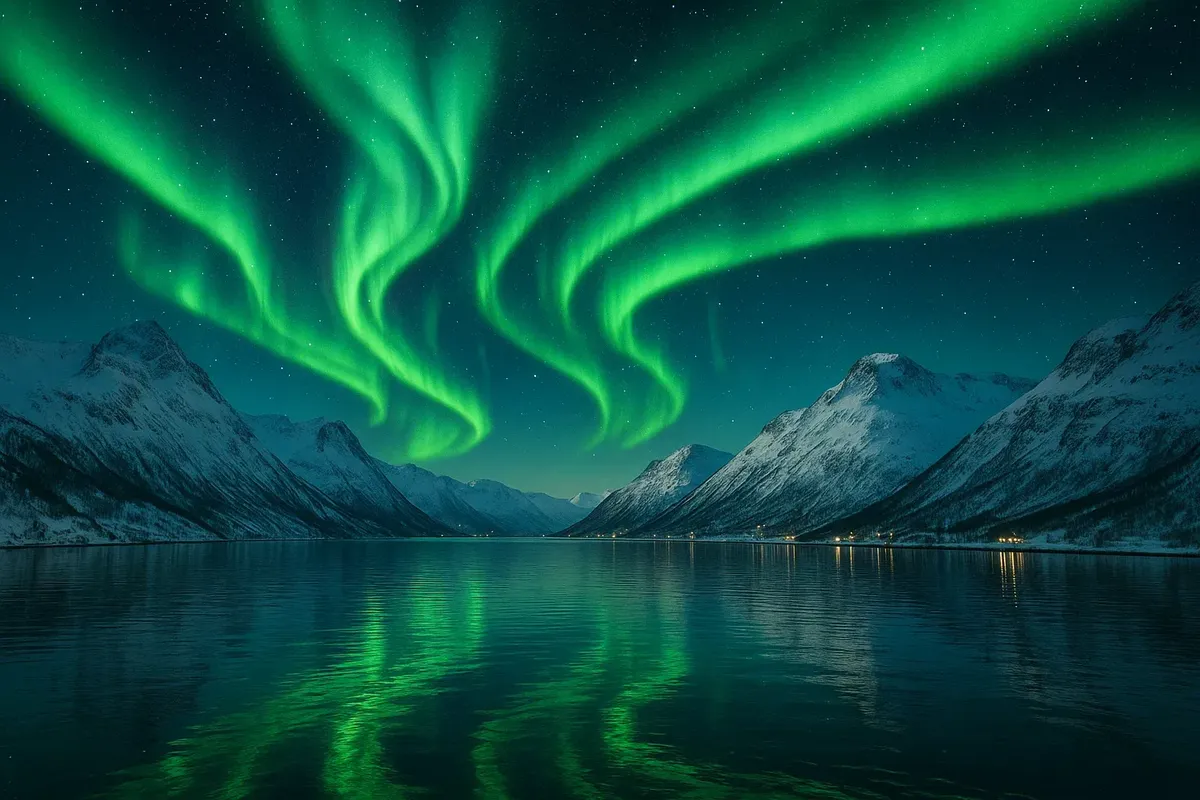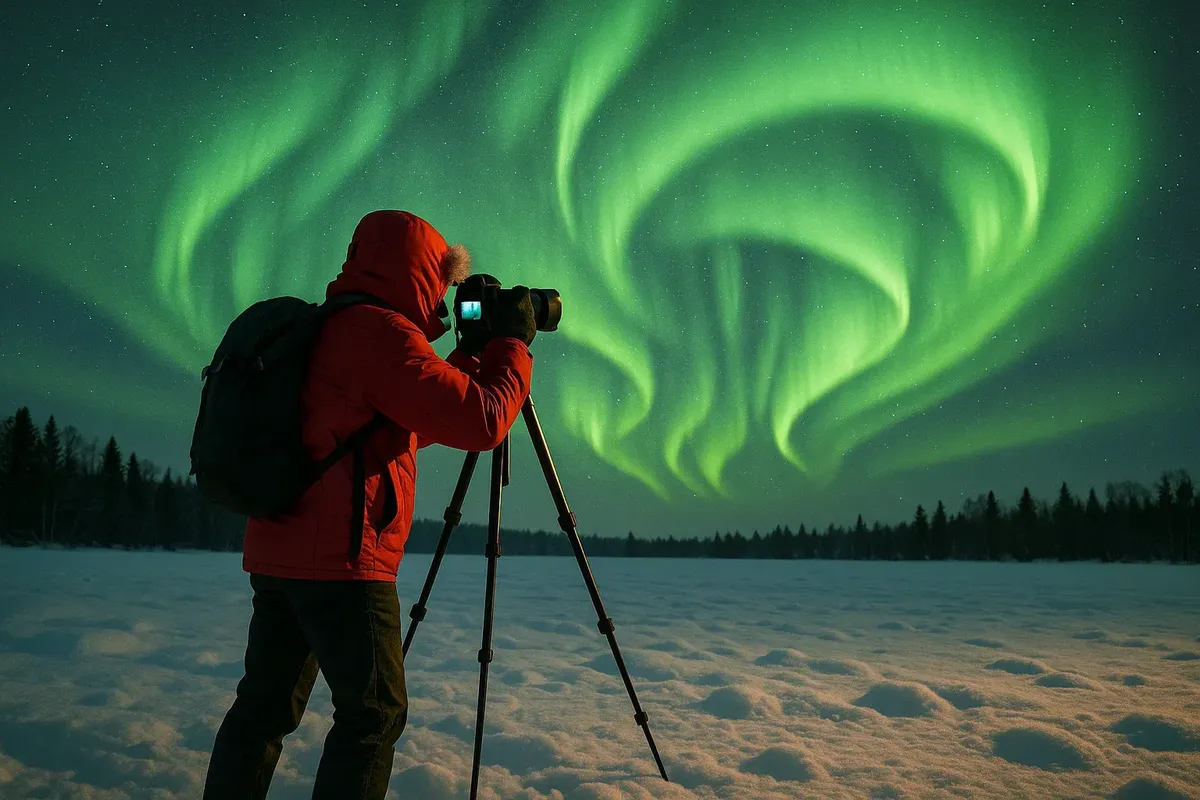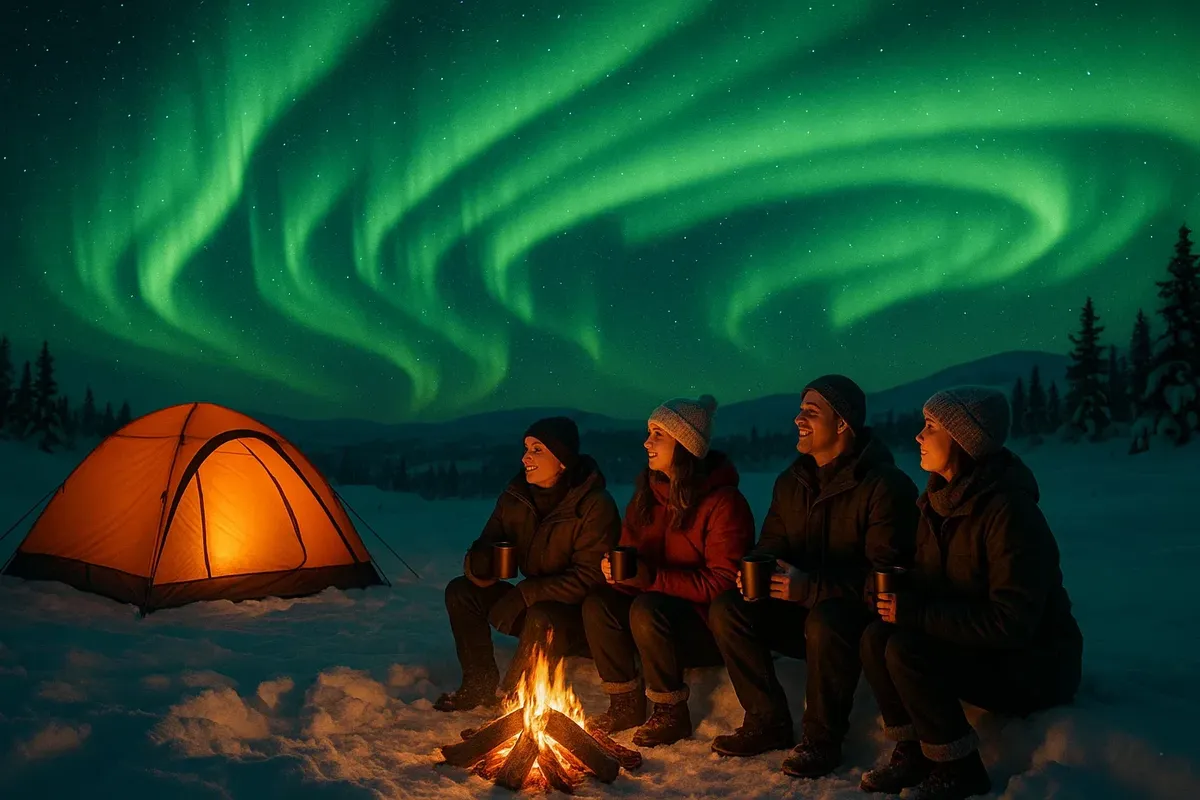🌌 ‘When is the best time to visit Norway to see the Northern Lights: a complete guide for tourists’ 🌍
The Northern Lights (also known as the Aurora Borealis) are one of the most amazing natural events in the world, and Norway is the perfect place to see them. Every year, thousands of people come to the north of the country to see the amazingly bright green, purple and red night sky. In this article, you will learn which months are best for travelling to Norway to see the Northern Lights, which regions to choose, and how to prepare for your trip so that your journey is unforgettable.
When is the best time to see the Northern Lights in Norway?
The best months to see the Northern Lights are from late September to early April. The best months are when the nights are long and dark and the weather is clear and calm. These are October, February and March, when there is a particularly good chance of seeing the Aurora Borealis. Many travel companies offer special tours to the north of the country during these months.
Where in Norway should you go to see the Northern Lights?
The best places to see the Northern Lights in Norway are above the Arctic Circle:
- Tromsø (also known as the capital of the Northern Lights);
- Lofoten Islands;
- North Cape (the northernmost point in Europe);
- Alta and Kirkenes;
- The island of Senja is not as popular with tourists, but it has everything you could want.
These places have low light pollution and are the best places to see the Aurora Borealis.

Why can you see the Northern Lights so well in Norway?
Norway is the best place to see the Northern Lights because its northern regions are above the Arctic Circle, where there are lots of northern lights. The weather is stable in winter and there is not much light pollution, which makes Norway one of the best countries to travel to for this natural phenomenon.
What's the weather like, and does it affect the chances of seeing the Northern Lights?
The weather is very important if you want to see the Northern Lights. The best conditions for this are when the sky is clear and there are not many clouds. Even if there is a lot of aurora activity, you might not be able to see it because of thick clouds. So, it's important to check the weather forecast on the Yr.no website and plan your trip based on the local conditions and forecasts.
How long do the Northern Lights last, and what time of day are they best seen?
The Northern Lights are most often seen between 7 p.m. and 2 a.m. They can last from a few minutes to several hours. You should start watching at around 9–10 p.m. and be ready to wait for a while. Tours to see the northern lights often start at around 8–9 p.m. and can last until midnight or later.
Are the Northern Lights visible in Oslo or other southern cities in Norway?
In Oslo and other southern regions, the Northern Lights are very rare and usually only appear when there is a lot of solar activity. If you want to be sure of seeing it, it's best to travel north to areas above the Arctic Circle (like Tromsø, Lofoten or Nordkapp), where there's a higher chance of seeing the Aurora Borealis.

Do I need special equipment to see or photograph the Northern Lights?
You don't need special equipment to see the Northern Lights — they're easy to spot even without binoculars or a telescope. If you want to take good photos of the Northern Lights, it's best to use a camera with a tripod and a long exposure setting. This will help you to capture the bright colours and high saturation of the Aurora Borealis. It's really important to have spare batteries and warm clothes, because shooting can take several hours in the cold.
What should I wear and bring with me when I go on a trip to see the Northern Lights?
You need to have the following things if you are going to see the Northern Lights:
- Make sure you wear warm clothes that are layered up (like thermal underwear, fleece, a down jacket or an insulated jacket).
- Wear trousers and boots that keep you warm.
- Mittens, a hat and a scarf.
- Take a flask of hot drinks and some extra batteries for your camera, as equipment can run out of power in cold weather.

What can I do to make it more likely that I will see the Northern Lights in Norway?
- To increase your chances, choose trips that last between three and five days.
- You can find information about the aurora on websites and apps such as Aurora Service or Aurora Forecast.
- Try to stay away from artificial lighting (like that found in cities and on roads).
- Get help from professional guides who know the best places to watch and can quickly tell you if the weather or aurora activity is going to change.
What other activities can tourists do when they come to see the Northern Lights?
When tourists go on a trip to see the Northern Lights, they can also do other fun winter activities, such as:
- Dog sledding is a great activity to try!
- Tours on snowmobiles.
- There are two types of skiing: mountain and cross-country.
- We will visit traditional Sami villages.
- You can stay in hotels and igloos made of ice.
- This makes the trip even more fun and memorable.
Norway is the perfect place to see the Northern Lights. If you plan your trip at the right time and choose the right region, you will have a great opportunity to enjoy one of the most beautiful natural events in the world. Travel wisely, and you'll have an unforgettable experience when you see the Aurora Borealis!





2 comments
Log in to leave a comment
Har dere et personlig favorittsted i Norge hvor nordlyset vanligvis er sterkest? 🤔